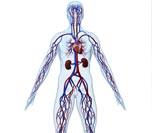The movement of food through the body is made up of a complex but poorly understood array of mechanisms that utilizes neurons, muscle cells, and interstitial cells working together in the gastrointestinal (GI) tract. To better understand this process researchers have looked to the intestinal muscularis macrophages, a type of immune cell that resides in the smooth muscles surrounding the GI tract. These macrophages have been shown to secrete a substance called bone morphogenetic protein 2 (BMP2), which binds to enteric neurons and directs them to coordinate the muscle cell contractions that then propel food through the gut lumen via peristalsis. The enteric neurons, in turn, produce a growth factor required by the macrophages. This macrophage-neuron crosstalk was therefore identified as a possible key interaction and was confirmed with a murine study that showed that mice lacking sufficient growth factor, BMP2, or muscularis macrophages, displayed inferior gut muscle contractions.












